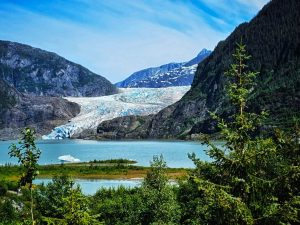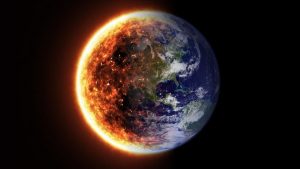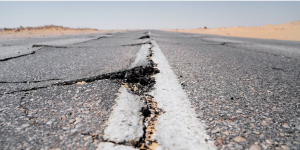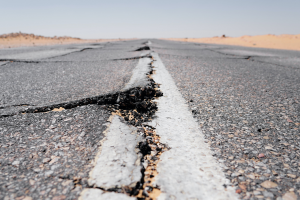An alarming trend of the North Pole heating up twice as fast as the rest of the planet was confirmed in Tuesday’s state of the Arctic report, published by environmental scientists working under the aegis of a US government agency, AFP reported on Tuesday.
The late summer thaw in 2020 was the second-worst year on record after 2012. Compared to its highest historical level, half of the Arctic sea ice is now gone.
The sea ice floating the Arctic ocean melts in summer and freezes again in winter. The problem is each year it is melting a bit more in the warm weather and refreezing a bit less.
With scientists now getting reliable data as satellites have been photographing and measuring the Arctic non-stop since 1979, there is no room for doubt about the region’s melting pattern.
Since 2010 a new generation of satellites is capable of measuring the thickness of the ice and here the news is also grim. The ice is thinner, younger and more fragile.
The report released Tuesday, called the Arctic Report Card 2020 and published by the National Oceanographic and Atmospheric Administration (NOAA), provides a wealth of information that illustrates the complexity of the Arctic climate system.
The climate in the rest of the world — wind and currents — affects what happens at the North Pole, while the South Pole is comparatively more isolated.
This complexity is seen in a statistic tucked away on page 13 of the report: Alaska’s North Slope experienced its coldest February in 30 years and it was also colder than usual in Svalbard, Norway.
But Siberia set heat records, with temperatures 3-5 degrees Celsius (5.4 to 9 degrees Fahrenheit) above normal, and the region suffered terrible wildfires in the spring, AFP wrote.
The air temperature at the surface of the Arctic over the course of 2019-2020 was 1.9 degrees Celsius (3.4 Fahrenheit) higher than the average for the period 1981-2010, making it the second hottest year on record since 1900.
The phenomenon of “Arctic amplification,” which causes this region to heat up faster than other parts of the world, is in full force.
The Arctic ocean is also heating up: in August of this year, the water was between 1 and 3 degrees Celsius (1.8 and 5.4 Fahrenheit) hotter at the surface than the average for 1982-2010.
Here, too, events are linked and fuel each other. When ice melts and exposes the ocean, the water absorbs more heat from the sun, which in turn worsens the melting of the sea ice, although this time from underneath.
“One of the things that’s important to realize about the Arctic is it’s a system. It’s a system of interconnected components,” said Donald Perovich, a professor of engineering at Dartmouth University and co-author of the sea ice chapter in the NOAA report.
“You can change one thing, those changes cascade through the whole system,” he said.
Sea ice is both an indicator and an amplifier of global warming.
Its melting does not contribute directly to rising sea levels, as this ice is already in the water. But the melting does contribute indirectly by heating up the water.
For Arctic researchers, the true shock came in September of 2007, when the summer melt of the sea ice was extreme. (Since then, 2012 broke the record.)
“We never returned to the levels we saw in 2006 or earlier,” said Perovich. “We’re in this new regime”
Models forecast that there will no longer be any sea ice in summer in the Arctic starting between 2040 and 2060.
Back in the first edition of this report in 2006, researchers were still not sure of the Arctic heating trend. They expressed doubt that permafrost — soil that is frozen year-round — could melt in the north of Alaska.
Now, those same researchers say “it is anticipated that progressive deep thawing of permafrost in this region may begin in 30-40 years.”






